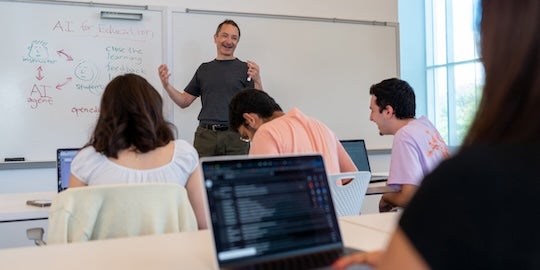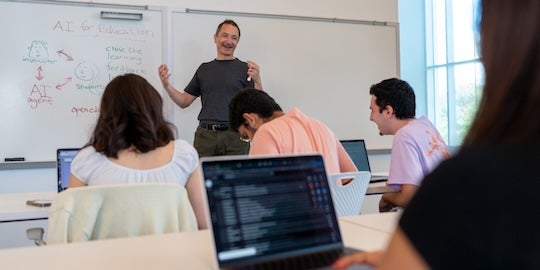OpenStax, an educational initiative of Rice University, announced that it has surpassed $3 billion in cumulative student savings since 2012 — nearly tripling the amount from just four years ago. The milestone underscores the organization’s continued impact on educational access and the growing demand for adaptable, high-quality learning materials.
Founded to address the rising cost of course materials, OpenStax began by publishing free, peer-reviewed textbooks. The OpenStax digital library, now standing at over 80 titles, has helped 43.3 million learners across 169 countries access necessary course materials. Its openly licensed textbooks are currently in use at 72% of U.S. colleges, while K-12 usage has surged to reaching nearly 1.7 million students. In total, OpenStax has helped save students an all-time total of nearly $3.4 billion in educational costs.
“OpenStax has always had the ambitious goal to help make knowledge free and accessible for all,” said Richard G. Baraniuk, founder and director of OpenStax and SafeInsights and the C. Sidney Burrus Professor of Electrical and Computer Engineering at Rice. “We’ve grown from a small set of open textbooks to a full library of core course materials used in thousands of classrooms. And now we’re building the next generation of learning tools — technology that’s backed by research, shaped by educators and designed to meet the needs of today’s students.”

That next generation of tools includes OpenStax Assignable, a platform developed with direct input from educators and designed to meet real classroom needs now in use by nearly 900 U.S. learning institutions. Assignable integrates with learning management systems and allows educators to assign readings, assessments and interactive activities like simulations.
OpenStax is also expanding how learners discover and access educational content. Recent partnerships with artificial intelligence (AI) platforms, including Google Gemini, the Microsoft Learning Zone on Microsoft Copilot+ PCs and Google NotebookLM, help the organization reach an even broader group of learners using AI tools for self-study, enrichment or review, further advancing the mission to make high-quality education accessible to all.
“Access is evolving, and so are we,” Baraniuk said. “Whether students find us through their instructors, search engines or AI-supported tools, we want OpenStax to be where learning happens with quality, affordability and convenience at the center of the learning experience.”
The value of OpenStax is reflected in the experiences of the students and instructors who benefit from them. “I’ve been using OpenStax since seventh grade, and it’s helped me in so many classes,” said Jeffrey Zhong, a doctoral student in computer science at Princeton University. “The fact that it’s free takes a lot of pressure off, especially as a first-generation college student. I liked using OpenStax on my laptop or tablet and reviewing the study questions. I’m so thankful that these resources were there for me, and I’m glad they will continue to exist for more generations to come.”
“Many students face challenges affording course materials,” said Benetha Jackson, lead psychology instructor at Angelina College. “OpenStax textbooks check all the boxes — they are free, high quality and written in a way that is clear and accessible for our students. They’re easy to teach from, easy to learn from, and I highly recommend the psychology titles.”
OpenStax’s digital textbooks remain free to access and use at openstax.org, while optional enhancements, like OpenStax Assignable, are priced at an affordable rate for students to help sustain the organization’s nonprofit mission.
To explore OpenStax’s catalog and learn more about its impact, visit openstax.org.

